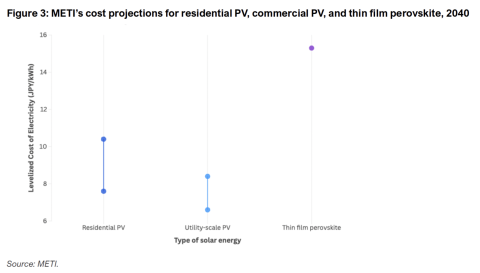Pakistan’s power future: Renewable energy provides a more diverse, secure and cost-effective alternative
Download Full Report
Key Findings
In recent years, investment in the Pakistan economy has been significantly supported by the China-Pakistan Economic Corridor (CPEC), a key element of China’s Belt and Road Initiative (BRI). The CPEC proposes US$50bn of investment into Pakistan infrastructure projects.
Pakistan is reported to be targeting 12 million tonnes (Mt) of coal imports in 2018/19, double the imports of just a few years earlier. This growing reliance on more expensive fossil fuel imports has contributed to increased core inflation during 2018 from 6.5% to 7.5%.
According to the National Electric Power Regulatory Authority’s (NEPRA) 2017 State of the Industry report, Pakistan’s objectives for the power generation sector include reduced dependence on imported fossil fuels, increased use of renewable energy, diversification of fuel resources, and security of fuel supply.
Executive Summary
Renewable energy including wind and solar is now the cheapest form of new electricity generation in Pakistan.
With over half the rural population unable to access electricity, Pakistan is rightfully undertaking a major build-out of electricity generation capacity to meet demand growth into the future. Further adoption of ever-cheaper and accessible renewable energy can make a greater contribution towards meeting Pakistan’s growing electricity demands. Instead, Pakistan is currently on an energy pathway towards over-reliance on imported fossil fuels, out-dated coal technology, and expensive, seasonal and delayed hydro power.
Polluting power plants relying on fossil fuel imports are being planned in the context of Pakistan’s weakening currency, growing current account deficit, declining foreign exchange reserves and escalating circular debt, reducing Pakistan’s energy security. This is not necessary now that tariffs for wind and solar are below all other generation sources.
Increasing reliance on cheaper renewables means pragmatic decisions can be made to reduce reliance on hydro and thermal power projects which are planned but have not yet begun construction. These expensive projects will not be necessary.
In addition to outcompeting other power technologies on price, renewables also have much faster construction times (18 to 24 months). Evidenced by current project delays in Pakistan, large hydro power projects are notorious for running over schedule and over budget, which only adds to their already very large costs. Nuclear power projects increasingly suffer large cost and time over-runs around the world. Pakistan is building more nuclear power units at a time when nuclear power globally is in decline, and its outlook is clouded.
Without the need for fuel, renewable energy has clear advantages over polluting, expensive thermal coal power. Many of Pakistan’s proposed coal-fired power plants will be fuelled by imported coal which has become increasingly expensive as the rupee has weakened. Coal- and LNG-fired plants will increase the nation’s reliance on expensive fossil fuel imports, placing Pakistan’s current account deficit under increasing pressure, reducing energy security, and further contributing to the nation’s import burden. Fossil fuel imports will also put upward pressure on inflation and interest rates, creating a permanent headwind to economic growth.
With renewable technology set to get cheaper into the future, a build-out of coal-fired power risks locking Pakistan into decades of out-dated technology. Renewable energy options will inevitably increase and eventually impact the utilisation rate of any coal-fired power plants built, impacting their viability and increasing the risk of stranded assets.
The Institute for Energy Economics and Financial Analysis (IEEFA) has modelled a highlevel, alternative future for Pakistan’s electricity system that addresses cost burdens and energy security. Our model assumes increased utilisation of Pakistan’s abundant wind and solar resources, while limiting the nation’s exposure to an over-build of hydro power, outdated coal-fired power and an excessive reliance on increasingly expensive fossil fuel imports. The resulting power mix makes better use of ever-cheaper and cleaner renewable energy technology to lock in a deflationary energy platform.
In IEEFA’s model, we project renewables supplying 28% of Pakistan’s increasing electricity requirements by 2030. Generation costs would be reduced and energy security increased through a diversity of generation technologies roughly split 30:30:30:10 between renewable energy, thermal power, hydro power, and nuclear power.
By increasing reliance on renewable energy to generate almost 30% of electricity by 2030, Pakistan can accrue the following benefits:
- Improved energy security through the diversification of Pakistan’s electricity generation sources, including limiting unnecessary thermal, nuclear and hydro projects.
- Improved energy security through a reduction in expensive fossil fuel imports.
- Reduced economic pressure via a reduced need to import coal and LNG, thereby improving Pakistan’s current account balance and relieving pressure on foreign currency reserves.
- Reduced cost of electricity generation thereby reducing the cost of tariffs currently putting additional pressure on consumers and businesses, while resolving the costtariff deficit in the electricity system’s to address circular debt.
- Further reductions in the cost of renewables through committed and ambitious energy policy settings driving down the cost of wind and solar as the domestic renewables industry scales up.
- Diversification of investment in energy sources including investment from China, a global renewable energy leader and a major investor in Pakistan’s electricity system, and from other domestic and foreign investors, aided by ambitious clean energy policies and a plan to embrace new power technology. Renewable energy is far more likely to attract new international investors to Pakistan than coalfired and hydro power.
IEEFA’s electricity model to 2030 builds a more diversified, lower cost electricity system for Pakistan that is more likely to provide a stronger foundation for sustainable economic growth into the future than the current energy path being taken.
Press release: IEEFA report: Pakistan could build greater energy security by increasing use of cheaper renewables
Please view full report PDF for references and sources.
















